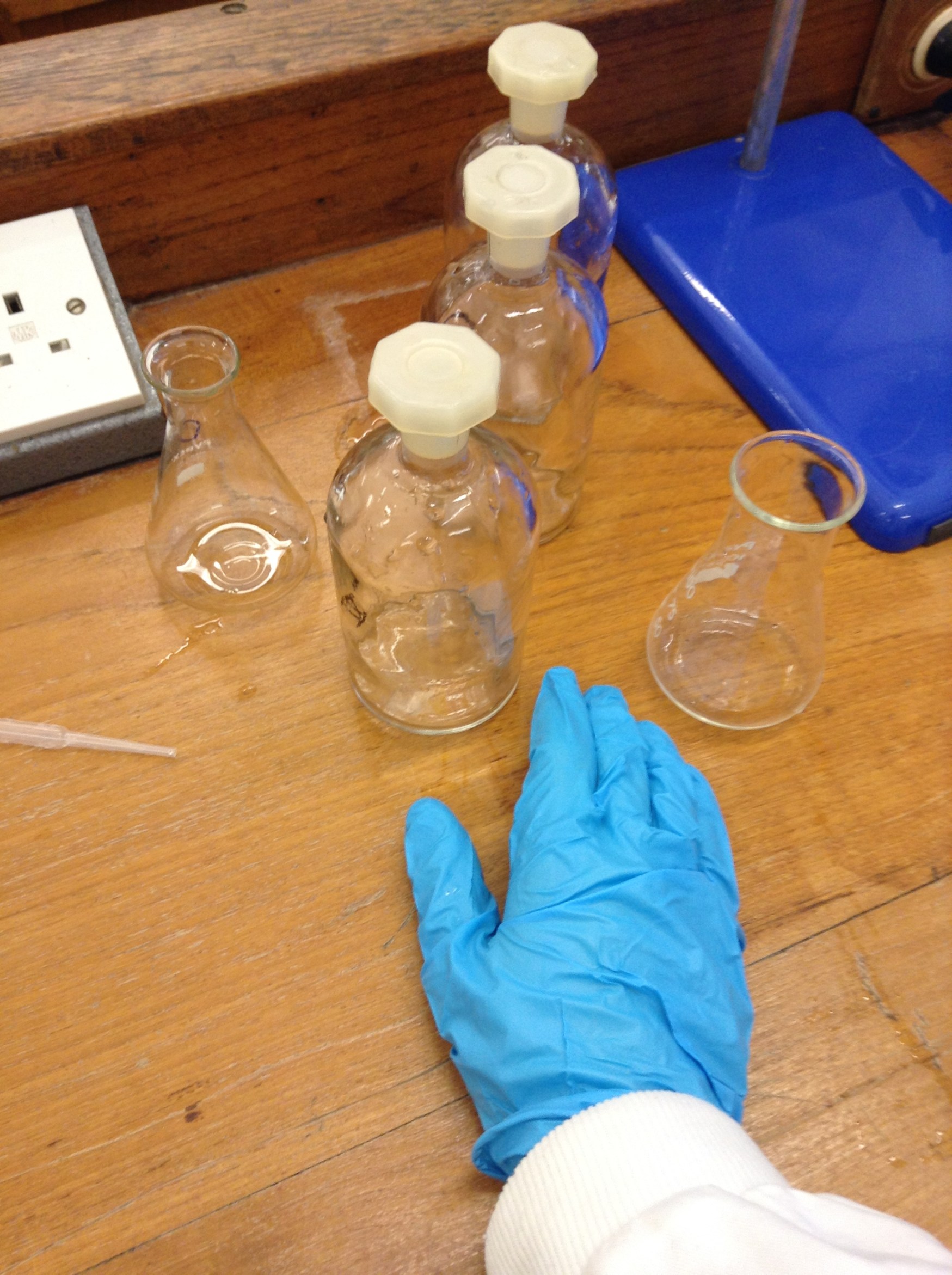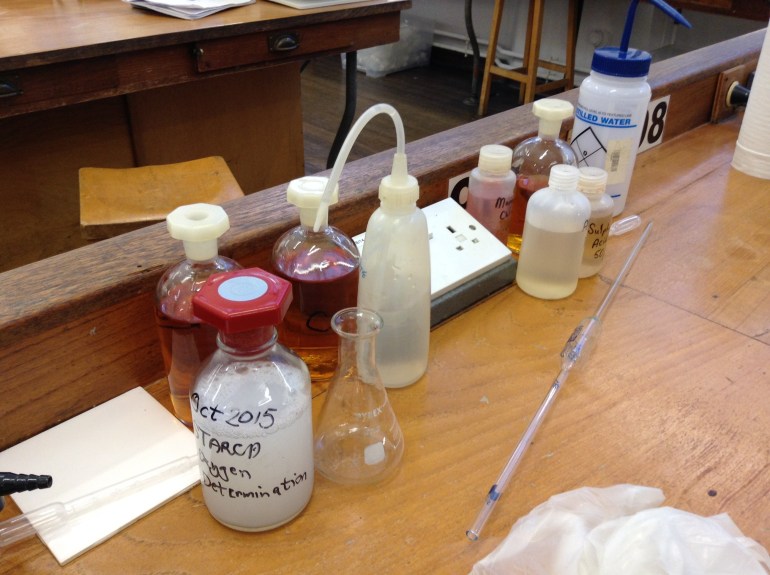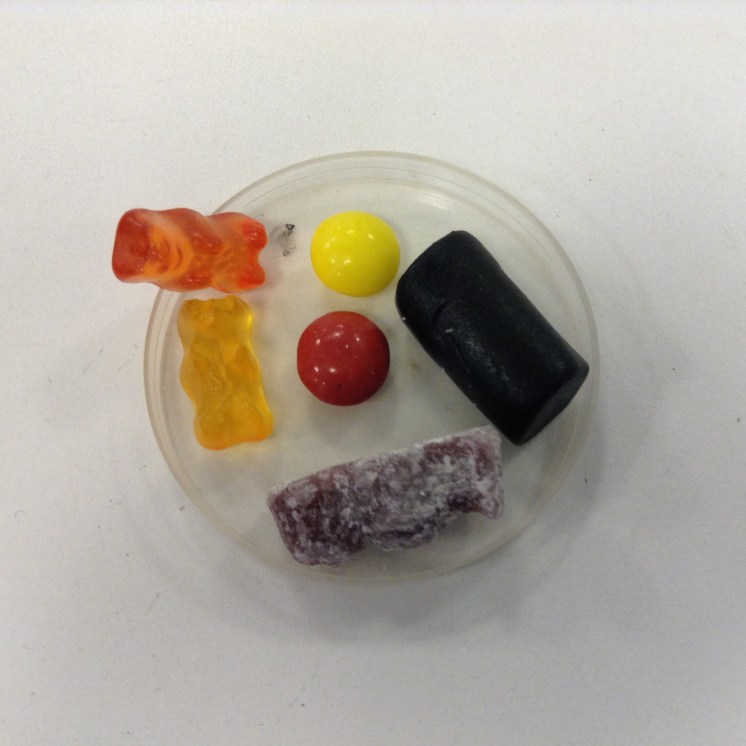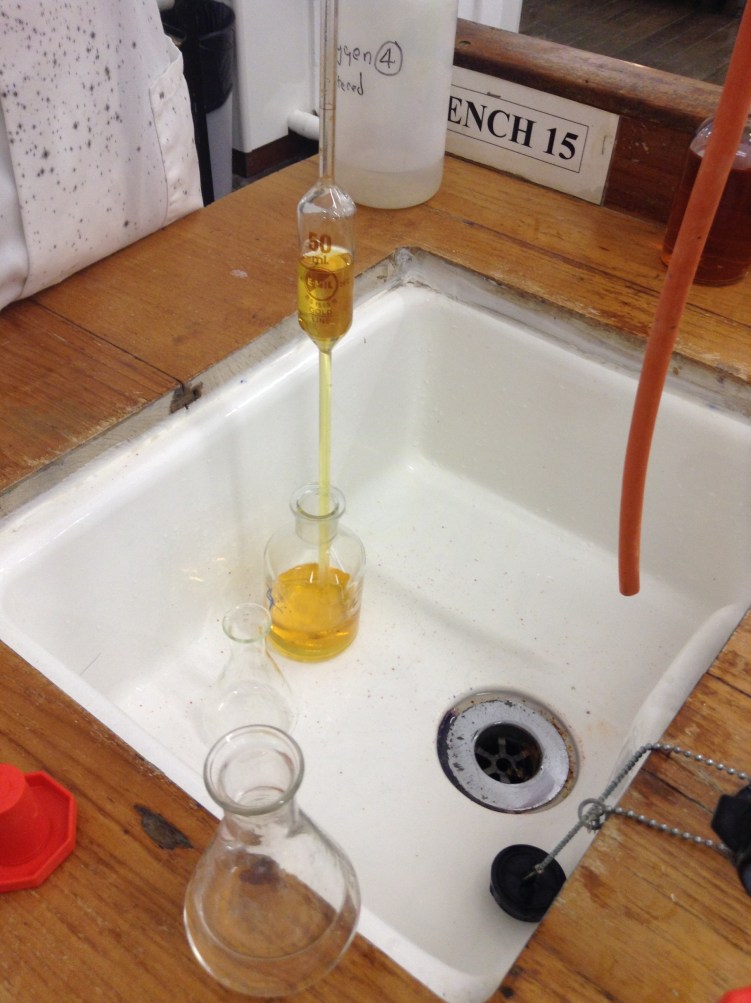My University Courses Part 2: Evolution of the Living Earth (2017)

Evolution of the Living Earth
This course is more Environmental Science than Geology. It is a good counterpart to Earth Dynamics as it explains how life and geology interact to create Earth as we know it today. The course contained lectures given by Dr. Steve Brusatte, Dr. Alex Thomas and Dr. Bryne Ngwenya. Each week we had a 3 hour lab. The course was broken down into 4 sections:
Origin and Evolution of Life (Quick crash course in Paleontology)
Global Climatic and Environmental Change (How does our Planet stay warm?)
Environmental Geochemistry (Chemistry that we needed to know)
Global Biochemical Sites (The 4 important chemical cycles on Earth [C, N, P & S])
I found all 4 sections very informative. They enhanced my view of the planet, showing the beautiful complexities of this restless being. The material selected was top notch.

Equipment from the lab work
The 4 sections in more detail bellow:
Origin and Evolution of Life:
This section of the course told the history of life. Steve gave us the timeline of life from the earliest microbes to modern mammals.He explained the basic principles of Evolution. He gave us a good idea how geology influenced the formation of life but in turn how life influenced the proceedings of geology. It was neat to his work in the field ranging from Scotland to China. The labs were as good as the lectures. In the lab we handled and sketched fossils. We studied and drew up evolutionary trees.

Candy was used as a visual tool to help us create an evolutionary tree
Global Climatic and Environmental Change:
In this section we touched on Earth’s Climate and its relation to global temperatures/ We learnt about key concepts like the Albedo effect, the effects of Earth’s orbit on the climate and the different techniques that are used to study past climates.
Outside the lectures Alex recorded extra videos that explained key components from the lectures. For this section we had to read scientific papers for the practical. We had to explain their contents only using 250 words. It was a good introduction to their structure and language.
Environmental Geochemistry:
This was the chemistry part of the course. It was a nice summary of the subject of chemistry, teaching the basics but dipping into advanced parts here and there. We started out with the atomic structure and finished with the laws governing chemical reactions. Out of the course the practicals for chemistry were the most complicated but in only 4 lab sessions we manged to cover vast fields like hydrology, environmental pollution, environmental chemical analysis and such. We had the chance to work in the labs of the Zoology building with a wide variety of equipment. We got plastic gloves, goggles and white lab coats giving the feel of being real scientist, working on real research. After each lab we created mini scientific reports, further pushing our skills.

Section of the lab work
Global Biochemical Cycles:
The last section of the course had a look at the 4 important chemical cycles around the globe. The 4 chemical cycles were the Carbon Cycle, the Nitrogen Cycle, the Sulfur Cycle and the Phosphorus Cycle. Each cycle was explained to us in detail including how they interacted with each other, how they affected biological life around the globe and how they influenced the global temperatures. The Gaia theory was introduced explaining how Earth might be a self regulating body. Organisms interact with their inorganic surroundings keeping the chemical balance on Earth in check, keeping global temperatures relatively stable.
This course was was very educational especially when it came to the subjects of chemistry and the global climate.




Recent comments